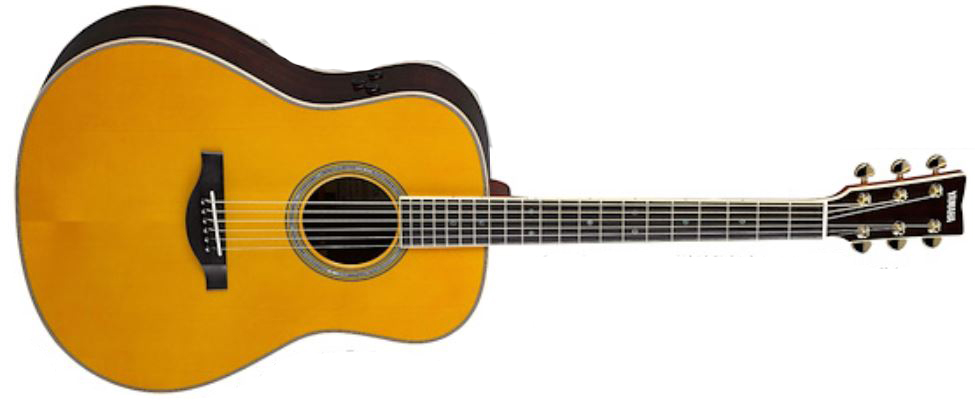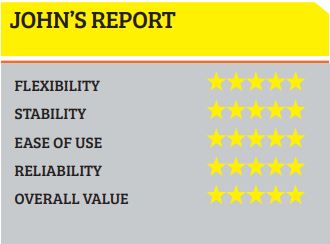By John Chevalier
 It’s rare that I do a product review that’s relevant to culture, circumstances, or a worldwide crisis, yet here we are. Over the last six months the church has been thrown into a new world. Some churches had already been live streaming their services while others were forced into this new reality. Some broadcast from their churches and others have been leading worship from home. That’s where this product review comes in. I want to introduce you to Yamaha’s TransAcoustic Series Guitars.
It’s rare that I do a product review that’s relevant to culture, circumstances, or a worldwide crisis, yet here we are. Over the last six months the church has been thrown into a new world. Some churches had already been live streaming their services while others were forced into this new reality. Some broadcast from their churches and others have been leading worship from home. That’s where this product review comes in. I want to introduce you to Yamaha’s TransAcoustic Series Guitars.
As a guitarist myself I tend to shy away from what looks like fad-typegear. So, my first reaction to a guitar that produced chorus and reverb without being plugged in wasn’t good. However, with the current pandemic and the many worship leaders who are leading worship on livestream from their living rooms, I took a closer look. I went to Yamaha’s website and listened to some audio samples and thought, if it sounds this good in person it could be really useful right now. Yamaha graciously honored my request and sent me an LL-TA as I believe this model would be the preferred choice for most worship leaders.
The guitar came in a HardGig Bag with backpack like shoulder straps. This model, with the solid Engelmann spruce top, has the mother of pearl rosette and fret dots. Picking it up it has the feel of a quality instrument. The body seemed a litter heavier than I expected until I remembered the additional weight of the electronics inside.
FEATURES
With this guitar it would be easy to focus on the technology and forget about the instrument itself. The TransAcoustic series has a solid Engelmann spruce top that has been artificially aged with Yamaha’s A.R.E (Acoustic Resonance Enhancement) Technology, which gives the guitar a tone that is normally only achieved after years of use. The back and sides are solid rosewood with a 5-ply mahogany/rosewood neck and an ebony fretboard.
For those of you who like to geek out on this stuff, A.R.E. Technology is achieved through precise control of temperature, humidity, and atmospheric pressure, which allows the molecular properties of the wood to be manipulated. For those of you who may be shopping different models I should note that not all have the A.R.E. Technology, so you’ll want to try these out and compare the sounds.
Sourcing the sound from an under-bridge pickup, the TA Series incorporates a very unique little actuator that lives inside the body and is attached to the back of the guitar between the bracing, using TransAcoustic Technology. When you play the actuator vibrates, which not only gives you the reverb and or chorus effect from the sound hole, but from the entire body of the guitar. Remember at this point the guitar is not plugged in and the chorus and reverb sound great.
There are three easy-toaccess controls that let you adjust the amount of each effect. The Reverb Control (Room/Hall), the Chorus Control, and the third knob is the TA Switch and Line Out Volume Control. Pressing the TA Switch for more than 0.3 seconds activates the TA function and also functions as the volume control when the guitar is plugged in. Yes, the TransAcoustic Technology is cool, but the guitar is very comfortable to play and has a very warm and rich sound even without the effects engaged.
THE ACTUAL TEST DRIVE
I played this guitar a lot, but for the review I used four different areas; My Studio, both plugged in and not, my living room, my back deck and, since I was in search of zero acoustics, I drove out in the middle of a 35 acre field which is behind my house. I started on my back deck and living room. I’m pretty critical of acoustic guitars and often find myself disappointed when playing one for the first time. This was not the case as I just couldn’t put this guitar down. I was every enamored with the sound both raw and with the effects on. The effects sound very natural and even better in person than the samples on Yamaha’s website.
One thing I noticed was that I could control the intensity of the effects with the knobs, but also by holding the guitar against my body. Hold the guitar away from your body gives you the full effect from the sound hole and the resonating back of the guitar. Hold it against your body and the sound just resonated from the sound hole and top of the guitar, which deadens the effect a bit. Playing around with both the knobs and body pressure gave me an interesting array of sounds.
Plugged in, the guitar sounds great and works just as you would expect. Both the guitar and the effects are very natural. I would say that, unless you are traveling with no pedal board for your acoustic, I find using pedals for effects when you are plugged in much easier to use. But don’t misunderstand that statement. Although it sounds great both ways, them unique strength of this guitar is definitely in its ability to add effects not plugged in.

Finally, out to the field. Why? Because I could. And it was great fun being out in the middle of nature hearing the guitar (reverb and chorus) with zero acoustics. It was a great experience and capped off the review with proof that the TransAcoustic is very unique.
WRAP UP We are in a strange place right now. Many worship leaders are leading from home, streaming, or recording the music portion of their services, with limited technology, and in this set-up the Yamaha TransAcoustic Guitar Series can definitely add to the worship and music experience. Of course, if you’re in a large church with all the tech you need, that’s great, but if not, I’d really suggest taking a look at this instrument.
John has been involved in multimedia communication for over 20 years. He is an Apple Certified Trainer and a full time Digital Video Instructor in Sonoma County, California. He also travels extensively presenting at workshops and seminars, focusing on Team Building and Leadership Development to improve organizational performance. www.johnchevalier.com




